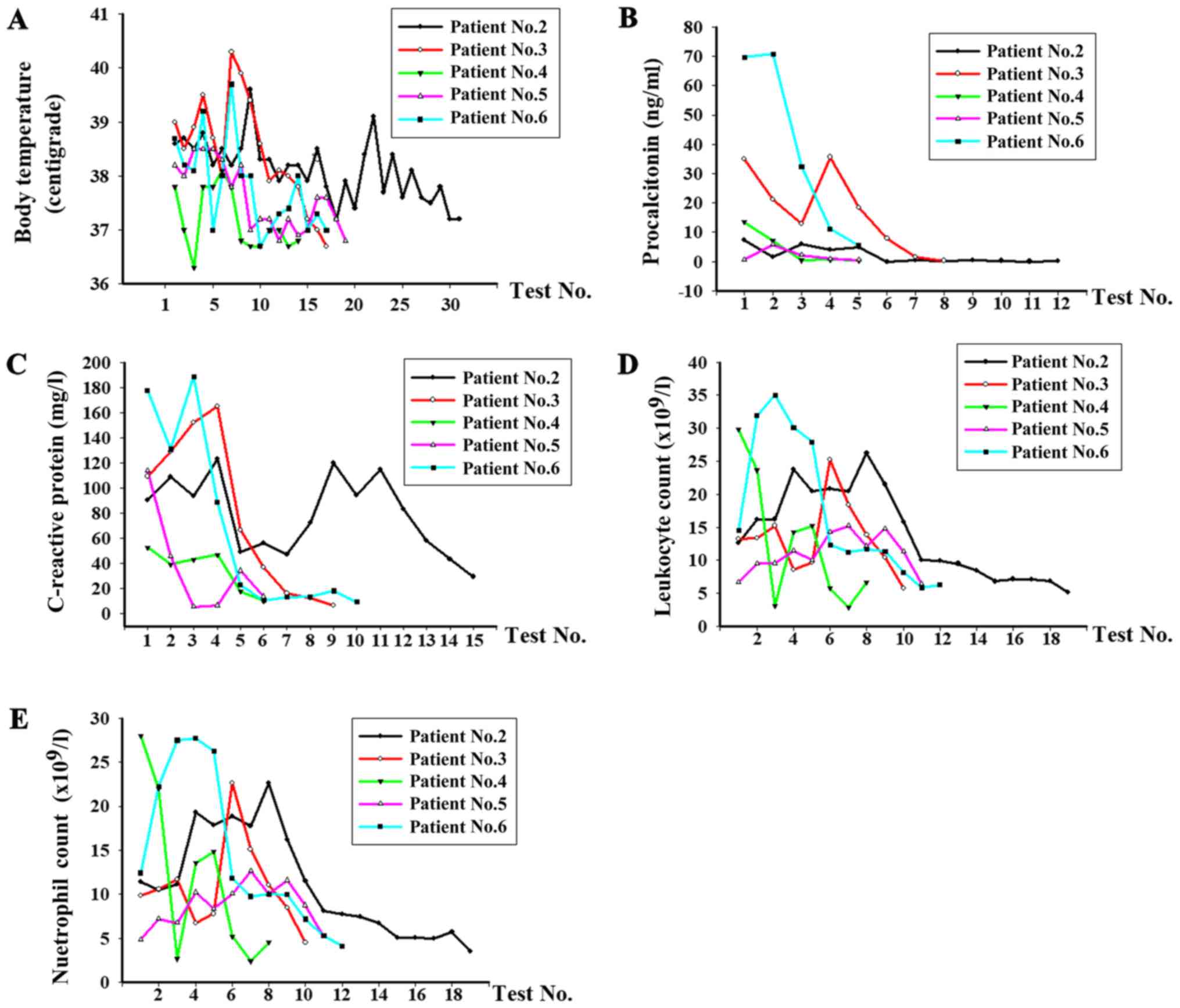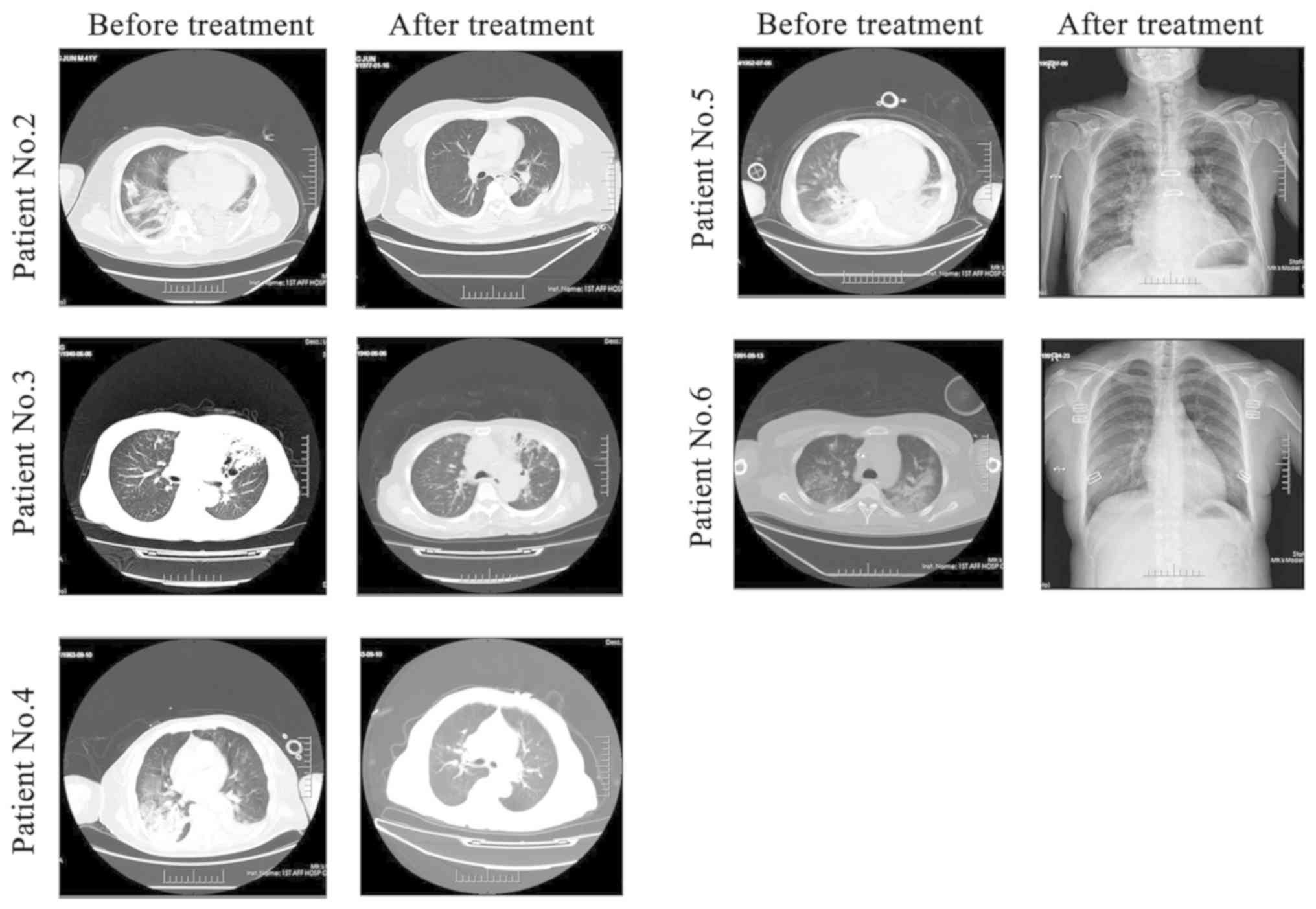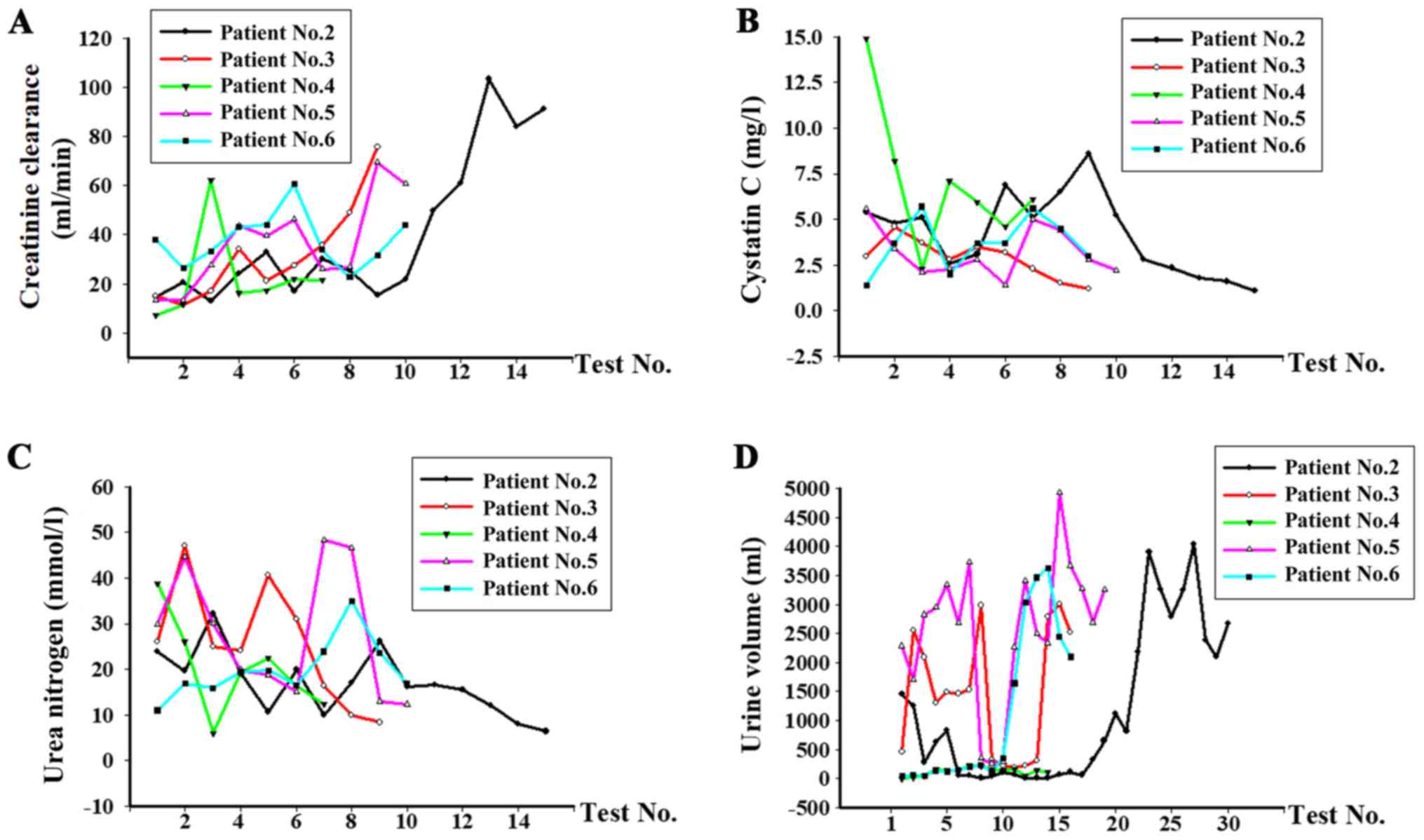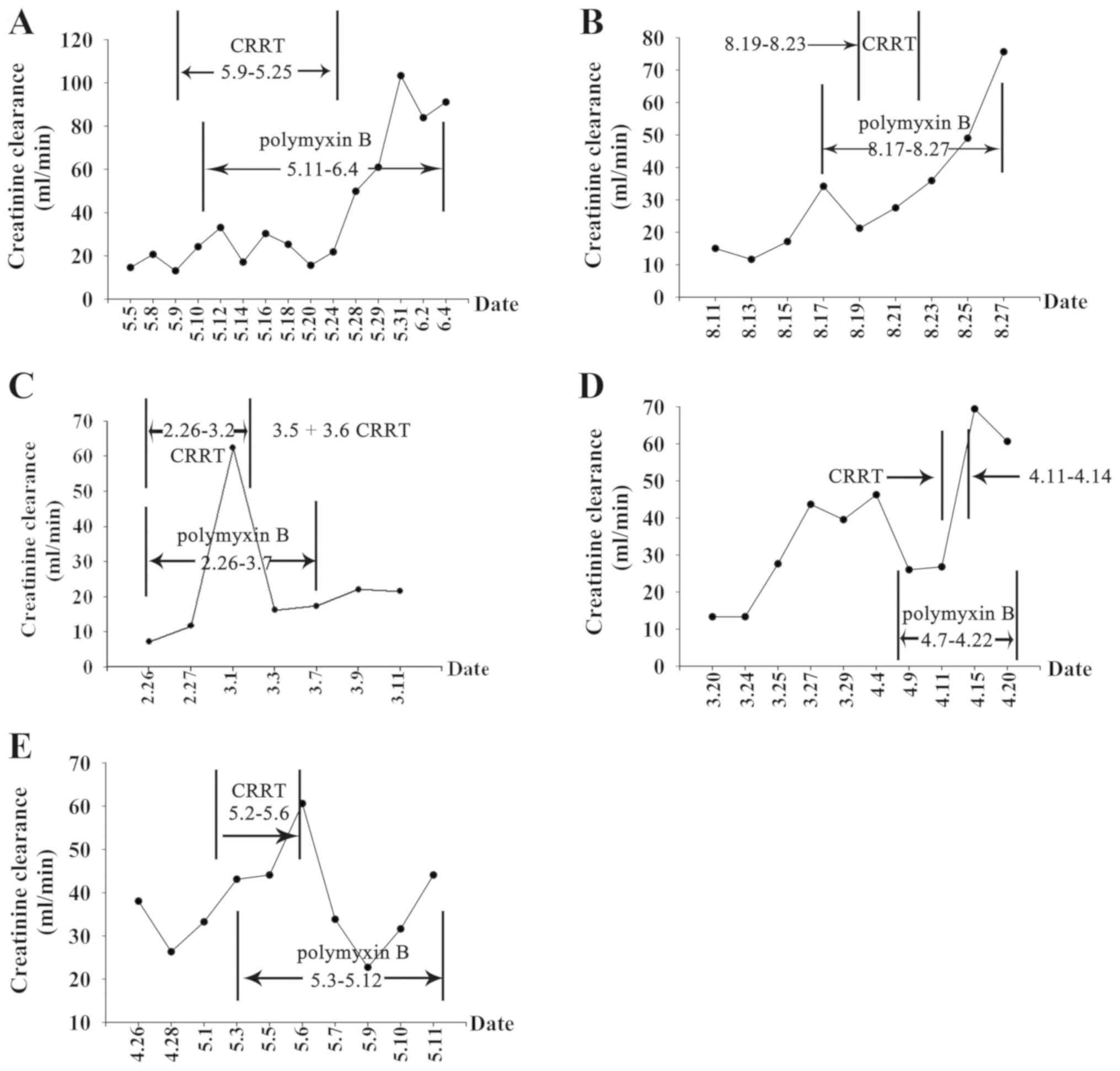|
1
|
Zakuan ZD and Suresh K: Rational use of
intravenous polymyxin B and colistin: A review. Med J Malaysia.
73:351–359. 2018.PubMed/NCBI
|
|
2
|
Wang M, Wei H, Zhao Y, Shang L, Di L, Lyu
C and Liu J: Analysis of multidrug-resistant bacteria in 3223
patients with hospital-acquired infections (HAI) from a tertiary
general hospital in China. Bosn J Basic Med Sci. 19:86–93.
2019.PubMed/NCBI View Article : Google Scholar
|
|
3
|
Mao T, Zhai H, Duan G and Yang H: Patterns
of drug-resistant bacteria in a general hospital, China, 2011-2016.
Pol J Microbiol. 68:225–232. 2019.PubMed/NCBI View Article : Google Scholar
|
|
4
|
Yue D, Song C, Zhang B, Liu Z, Chai J, Luo
Y and Wu H: Hospital-wide comparison of health care-associated
infection among 8 intensive care units: A retrospective analysis
for 2010-2015. Am J Infect Control. 45:e7–e13. 2017.PubMed/NCBI View Article : Google Scholar
|
|
5
|
Xu A, Zheng B, Xu YC, Huang ZG, Zhong NS
and Zhuo C: National epidemiology of carbapenem-resistant and
extensively drug-resistant Gram-negative bacteria isolated from
blood samples in China in 2013. Clin Microbiol Infect. 22 (Suppl
1):S1–S8. 2016.PubMed/NCBI View Article : Google Scholar
|
|
6
|
Rigatto MH, Falci DR and Zavascki AP:
Clinical use of polymyxin B. Adv Exp Med Biol. 1145:197–218.
2019.PubMed/NCBI View Article : Google Scholar
|
|
7
|
De León-Borrás R, Sánchez-Sergentón C,
Mayor-Becerra A and Laureano-Cuadrado AF: Polymyxin B for negative
multidrug resistant bacteria in a Hispanic population. P R Health
Sci J. 38:15–21. 2019.PubMed/NCBI
|
|
8
|
Liang Q, Huang M and Xu Z: Early use of
polymyxin B reduces the mortality of carbapenem-resistant
klebsiella pneumoniae bloodstream infection. Braz J Infect Dis.
23:60–65. 2019.PubMed/NCBI View Article : Google Scholar
|
|
9
|
Onufrak NJ, Rao GG, Forrest A, Pogue JM,
Scheetz MH, Nation RL, Li J and Kaye KS: Critical need for clarity
in polymyxin B dosing. Antimicrob Agents Chemother.
61:e00208–e00217. 2017.PubMed/NCBI View Article : Google Scholar
|
|
10
|
Elias LS, Konzen D, Krebs JM and Zavascki
AP: The impact of polymyxin B dosage on in-hospital mortality of
patients treated with this antibiotic. J Antimicrob Chemother.
65:2231–2237. 2010.PubMed/NCBI View Article : Google Scholar
|
|
11
|
Rigatto MH, Falci DR, Lopes NT and
Zavascki AP: Clinical features and mortality of patients Clinical
features and mortality of patients on renal replacement therapy
receiving polymyxin B. Int J Antimicrob Agents. 47:146–150.
2016.PubMed/NCBI View Article : Google Scholar
|
|
12
|
Manchandani P, Thamlikitkul V, Dubrovskaya
Y, Babic JT, Lye DC, Lee LS and Tam VH: Population pharmacokinetics
of polymyxin B. Clin Pharmacol Ther. 104:534–538. 2018.PubMed/NCBI View
Article : Google Scholar
|
|
13
|
Sandri AM, Landersdorfer CB, Jacob J,
Boniatti MM, Dalarosa MG, Falci DR, Behle TF, Bordinhão RC, Wang J,
Forrest A, et al: Population pharmacokinetics of intravenous
polymyxin B inpatients: Implications for selection of dosage
regimens. Clin Infect Dis. 57:524–531. 2013.PubMed/NCBI View Article : Google Scholar
|
|
14
|
Miglis C, Rhodes NJ, Avedissian SN, Kubin
CJ, Yin MT, Nelson BC, Pai MP and Scheetz MH: Population
pharmacokinetics of polymyxin B in acutely ill adult patients.
Antimicrob Agents Chemother. 62:e01475–17. 2018.PubMed/NCBI View Article : Google Scholar
|
|
15
|
Abdelraouf K, He J, Ledesma KR, Hu M and
Tam VH: Pharmacokinetics and renal disposition of polymyxin B in an
animal model. Antimicrob Agents Chemother. 56:5724–5727.
2012.PubMed/NCBI View Article : Google Scholar
|
|
16
|
Tran TB, Velkov T, Nation RL, Forrest A,
Tsuji BT, Bergen PJ and Li J: Pharmacokinetics/pharmacodynamics of
colistin and polymyxin B: Are we there yet? Int J Antimicrob
Agents. 48:592–597. 2016.PubMed/NCBI View Article : Google Scholar
|
|
17
|
Tsuji BT, Pogue JM, Zavascki AP, Paul M,
Daikos GL, Forrest A, Giacobbe DR, Viscoli C, Giamarellou H,
Karaiskos I, et al: International Consensus guidelines for the
optimal use of the polymyxins: Endorsed by the American College of
Clinical Pharmacy (ACCP), European Society of Clinical Microbiology
and Infectious Diseases (ESCMID), Infectious Diseases Society of
America (IDSA), International Society for Anti-infective
Pharmacology (ISAP), Society of Critical Care Medicine (SCCM), and
Society of Infectious Diseases Pharmacists (SIDP). Pharmacotherapy.
39:10–39. 2019.PubMed/NCBI View Article : Google Scholar
|
|
18
|
Satlin MJ, Jenkins SG and Walsh TJ: The
global challenge of carbapenem-resistant Enterobacteriaceae in
transplant recipients and patients with hematologic malignancies.
Clin Infect Dis. 58:1274–1283. 2014.PubMed/NCBI View Article : Google Scholar
|
|
19
|
Bassetti M, Peghin M and Pecori D: The
management of multidrug-resistant Enterobacteriaceae. Curr Opin
Infect Dis. 29:583–594. 2016.PubMed/NCBI View Article : Google Scholar
|
|
20
|
Justo JA and Bosso JA: Adverse reactions
associated with systemic polymyxin therapy. Pharmacotherapy.
35:28–33. 2015.PubMed/NCBI View Article : Google Scholar
|
|
21
|
Falagas ME and Kasiakou SK: Toxicity of
polymyxins: A systematic review of the evidence from old and recent
studies. Crit Care. 10(R27)2006.PubMed/NCBI View
Article : Google Scholar
|
|
22
|
Arulappen AL, Danial M and Sulaiman SAS:
Evaluation of reported adverse drug reactions in antibiotic usage:
A retrospective study from a tertiary care hospital, Malaysia.
Front Pharmacol. 9(809)2018.PubMed/NCBI View Article : Google Scholar
|
|
23
|
Gupta SK and Kumar KD: An assessment of
reported adverse drug reactions in a Tertiary Care Hospital in
South India: A retrospective cross-sectional study. Int J Pharm
Investig. 7:193–197. 2017.PubMed/NCBI View Article : Google Scholar
|
|
24
|
Tuon FF, Rigatto MH, Lopes CK, Kamei LK,
Rocha JL and Zavascki AP: Risk factors for acute kidney injury in
patients treated with polymyxin B or colistin methane sulfonate
sodium. Int J Antimicrob Agents. 43:349–352. 2014.PubMed/NCBI View Article : Google Scholar
|
|
25
|
Zhang H, Wang R, Shu W, Tang R, Liang X,
Zhang J and Wu J: Monitoring of vancomycin serum concentrations and
the evaluation of its safety and treatment outcomes in adult
patients. Zhonghua Wei Zhong Bing Ji Jiu Yi Xue. 30:538–543.
2018.PubMed/NCBI View Article : Google Scholar : (In Chinese).
|
|
26
|
Jenkins A, Thomson AH, Brown NM, Semple Y,
Sluman C, MacGowan A, Lovering AM and Wiffen PJ: (BSAC Working
Party on Therapeutic Drug Monitoring). Amikacin use and therapeutic
drug monitoring in adults: Do dose regimens and drug exposures
affect either outcome or adverse events? A systematic review. J
Antimicrob Chemother. 71:2754–2759. 2016.PubMed/NCBI View Article : Google Scholar
|
|
27
|
Zhu H, Guo SC, Liu ZQ, Wang B, Fu L, Chu
NH and Lu Y: Therapeutic drug monitoring of cycloserine and
linezolid during anti-tuberculosis treatment in Beijing, China. Int
J Tuberc Lung Dis. 22:931–936. 2018.PubMed/NCBI View Article : Google Scholar
|


















